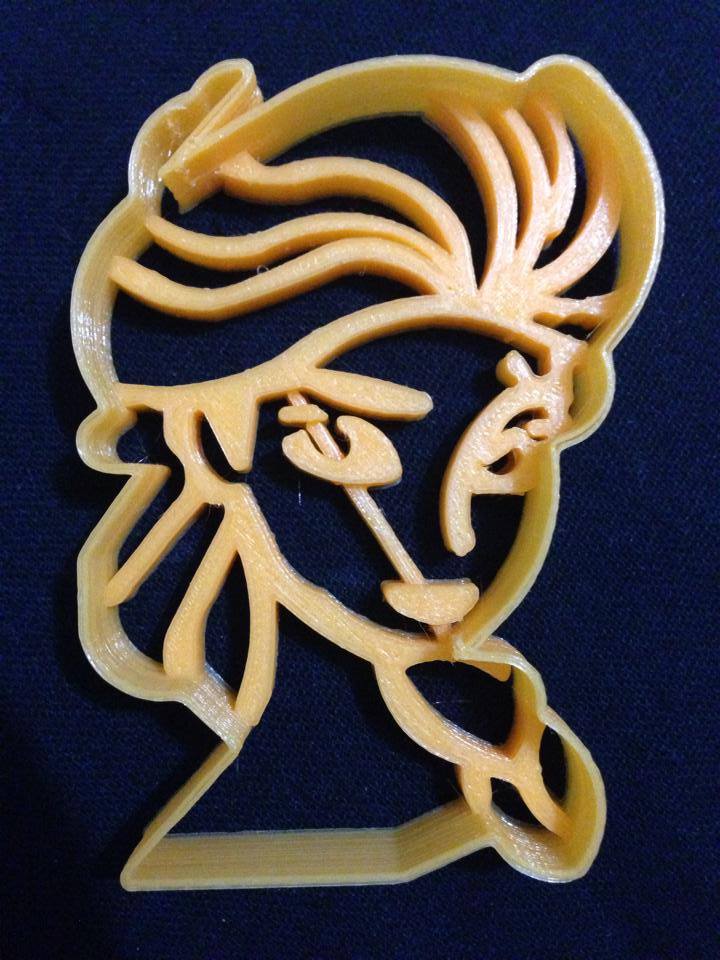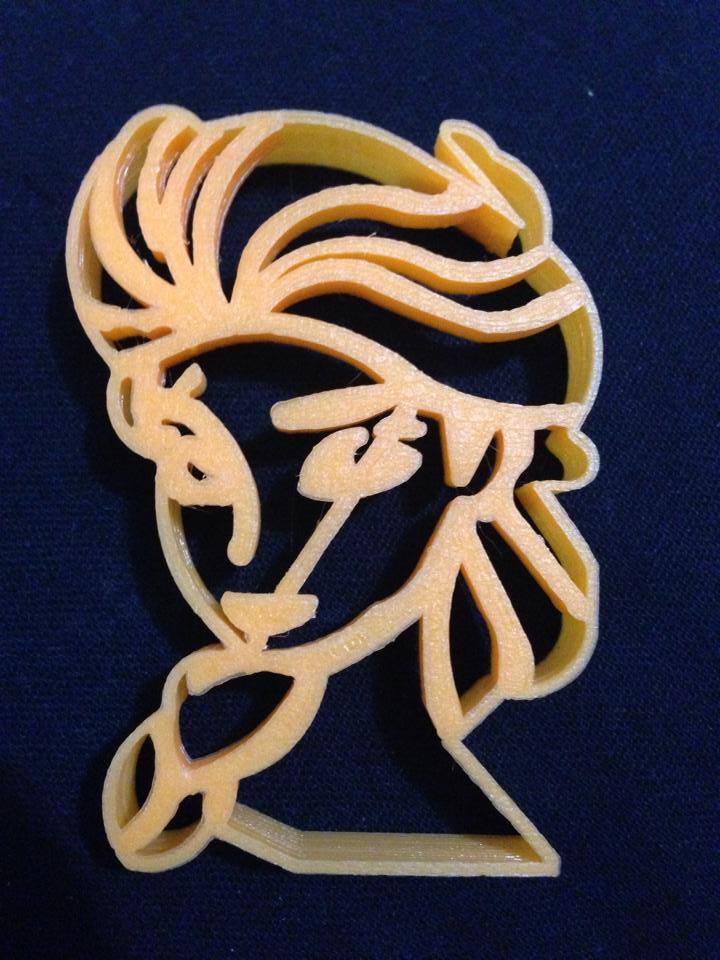Nonsolid object becoming solid when exported to Cura
-
Thanks for all the tips, guys!
 Yes, I'll add some geometry connecting the free-floating eye and mouth.
Yes, I'll add some geometry connecting the free-floating eye and mouth. 
-
Great, and please post photos of the finished print and cookies once you make them!

-
I most definitely will.

-
Here is the finished cookie cutter, guys.
 Can't wait to try this on fondant and make sugar cookies!
Can't wait to try this on fondant and make sugar cookies! 


-
Nice result!
-
Looking good!
-
Hello again, guys!

I'm making an Anna cookie cutter this time around.
 For the life of me, I can't figure out what's wrong with the model. I still have a lot to learn on Sketchup, indeed.
For the life of me, I can't figure out what's wrong with the model. I still have a lot to learn on Sketchup, indeed.  The neck becomes solid when I export it to Cura.
The neck becomes solid when I export it to Cura.  Kindly check attached files.
Kindly check attached files.Would anyone be able to point out what's wrong with the model?
Thank you.

-
To check if any model is a solid you need select all of the relevant geometry and make it into Component [or Group].
Its "Entity Info" will not include the word 'Solid' in its header if it is not a solid.
Sadly it is not a solid.
It is racked with internal partition faces.
Use thomthom's Solid-Inspector to see the many issues.
My SolidSolver cannot fix it as the issues are two convoluted...
To fix it, edit it cut a section-plane looking down so you can see inside it.
Erase any internal facets and faceless edges [select+<del> key].
Remember that a solid object can only contain faces and edges, and every edge must have two faces - no fewer and no more !
Internal partition faces mean there will be edges with only one or more likely three or more faces.
There are some faceless edges, and you have a part meeting at a point - meaning that edge has four faces !
A little remodeling is needed
-
Thanks TIG.
 I really appreciate the help.
I really appreciate the help.  I most definitely need to remodel Anna.
I most definitely need to remodel Anna.  Just a small favor: can you take a screenshot of the part that has four faces?
Just a small favor: can you take a screenshot of the part that has four faces? 
-
See this...
-
Fantastic! Thanks a lot, TIG.

Advertisement







